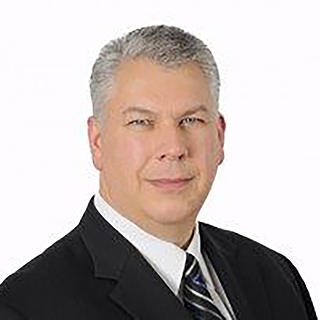The Three Stages of Retirement: The Passive Stage (Part 4)
- Darryl Smith
- Mar 18, 2020
- 4 min read

When I am working with new clients, one of the first questions I asked them is to envision their lives, 5, 10 and 20+ years down the road and to share with me what their life may look like in terms of where they are living, what plans they have in place for the simplification of their financial lives, and how they will adapt to changes in health for themselves or their spouses. The response’s I get confirm the fact the most people haven’t given a lot of consideration to the second or third stages and their focus is usually on the first stage.
Many of us get stuck thinking about the first or active phase of retirement and how we are comfortable managing the day-to-day of our financial lives. However, the difficult task is thinking further ahead. In the previous blog of this series, we started to touch on life in the semi-active stage of retirement (where we begin to perform with less energy than we once did). This final stage of retirement is the most difficult to envision because many of us don’t want to envision it at all. However, it is a stage we will eventually reach and needs to be planned for in advance. As we come to the end of the semi-active stage, we finally reach the passive stage of retirement.
What is the passive stage?
The passive stage is the final stage of retirement. Although significant changes in health can bring on this final stage earlier, for many it occurs around the age of 85 and onwards and it’s where you will experience the biggest lifestyle changes. It’s during this stage where you will see your energy levels decrease even more, and you may even require extra assistance from your family or perhaps a personal support worker to perform some of the simple tasks of daily living. During this stage, you will notice costs for lifestyle items such as vacations and entertainment decrease, and to start seeing other costs such as health care go up - sometimes significantly. Especially if you need to move into a retirement or nursing home or have to modify your home to make you more comfortable.
How should you plan your finances at this stage?
Many of my clients have financial concerns about the cost of their care in retirement and how expensive it may be to live in a long-term care facility. So, how do you prepare for this phase? Having the bulk of your net worth in liquid form is a great start. By reducing the number of material possessions and having more wealth in liquid assets, it gives you the ability to maintain control and make decisions quickly if need be. For example, let’s say you’re transitioning from the semi-active to the passive stage of retirement. You may now decide it’s time for you to move into a long-term care facility. If your wealth is tied up in fixed assets, the process of moving is going to be much more complicated than it would if you had liquidated your assets beforehand. In addition to having liquid assets, it will make the winding up of your estate much more efficient for your beneficiaries when you pass away. With proper planning, inheritances and charitable gifts can be passed down to beneficiaries within 10 days and can bypass the delays, stress, and costs of probate.
Why you need to plan for this stage in advance.
You should plan for the passive stage of retirement during the active stage while you still possess the mental capacity to make your own decisions. It’s important to include your family in your decisions so they have a clear understanding of how you want to live in the future and how everything will be paid for. This will eliminate both emotional and financial stress within your family members to preserve present and future family relationships.
The process of proper planning for the different stages of retirement is critical to remove any potential worries and concerns. Changing fixed assets such as your home, business, investment real estate, RV’s, collector cars, boats etc. to liquid investment portfolios lets you know for certain that you will have a consistent cash flow program in place to pay for all of your personal and healthcare needs as well as having the peace of mind knowing you’ve considered all facets of planning for each stage of your retirement.
The key to being prepared for every stage of retirement is by working with the right financial advisor who understands how to customize a retirement plan that fits your present and future needs and requirements. As a professional financial advisor with 25 years of experience and countless resources available, we can work together to create a retirement plan you feel confident about and will allow you to enjoy your retirement stress-free. Contact me, Darryl Smith, at Synergy Life Financial at info@synergylife.ca to set an appointment so we can look at your retirement plan together. Don’t wait to create the perfect plan for all stages of your retirement! Be sure to check out my guidebook below if you are a blue-collar business owner — 10 Tips to Maximize Blue-Collar Wealth. With my assistance, I can make retirement planning easier. I look forward to working with you, and thanks for following along with this series!





Comments